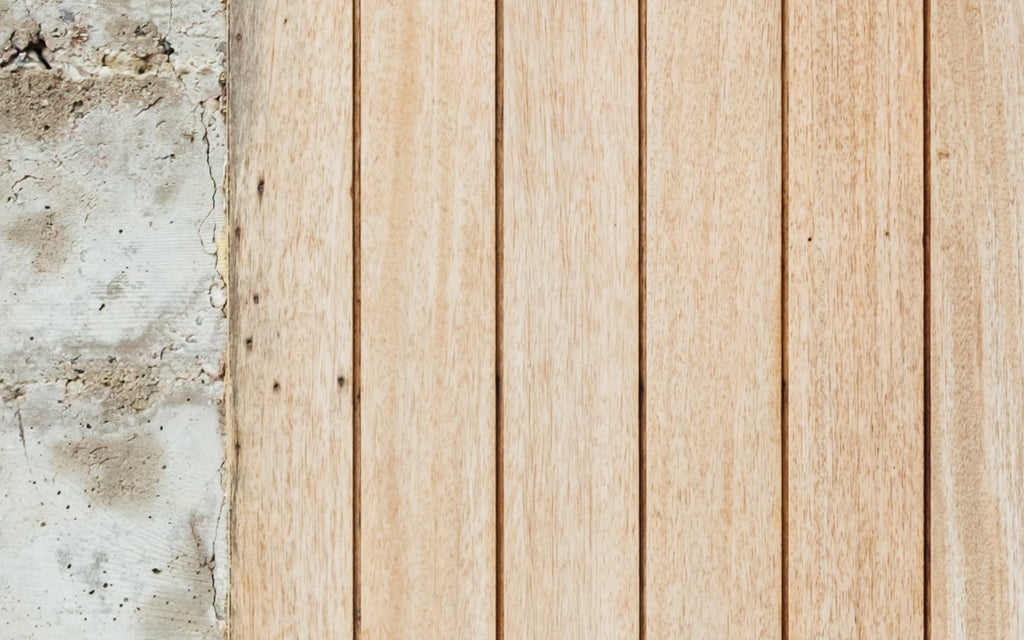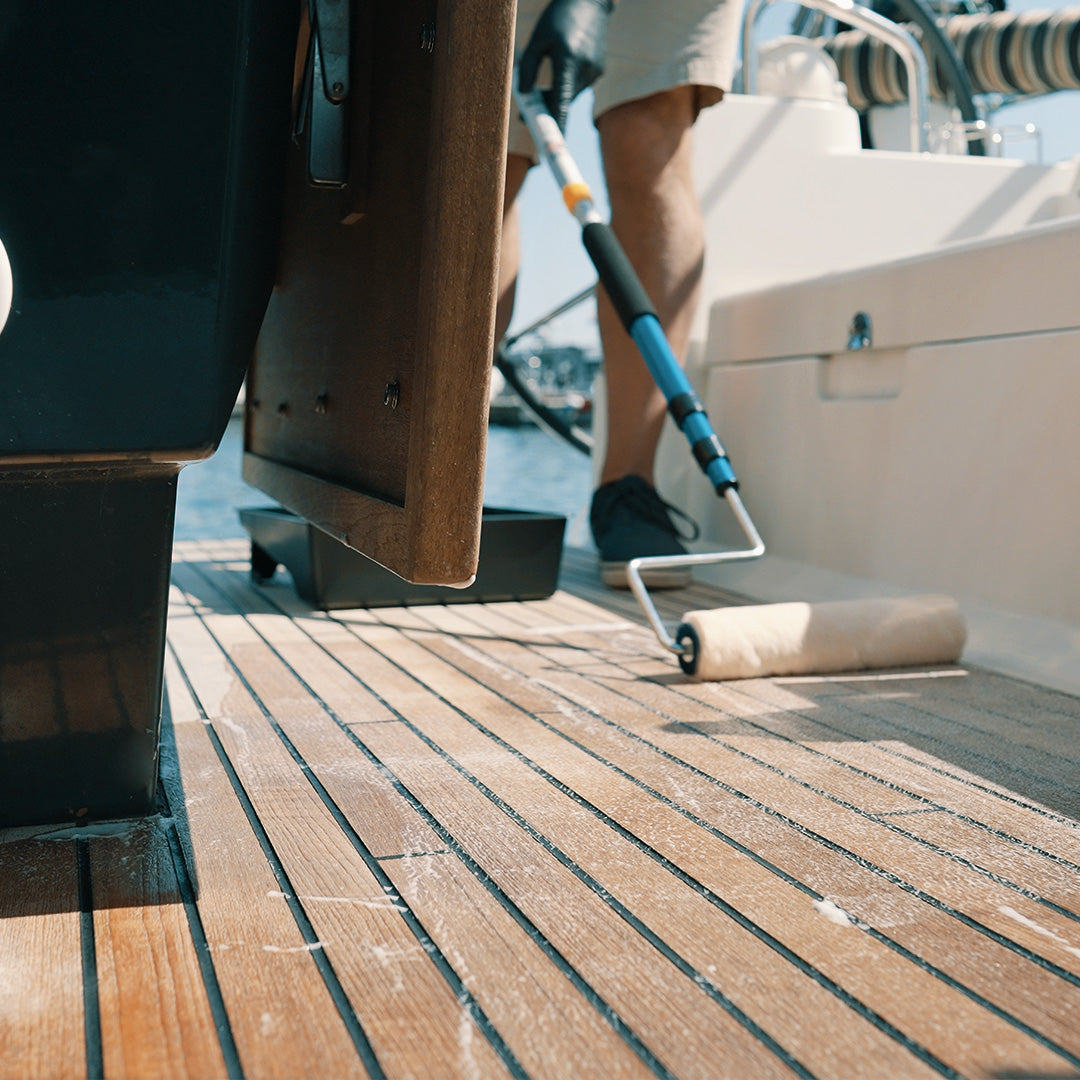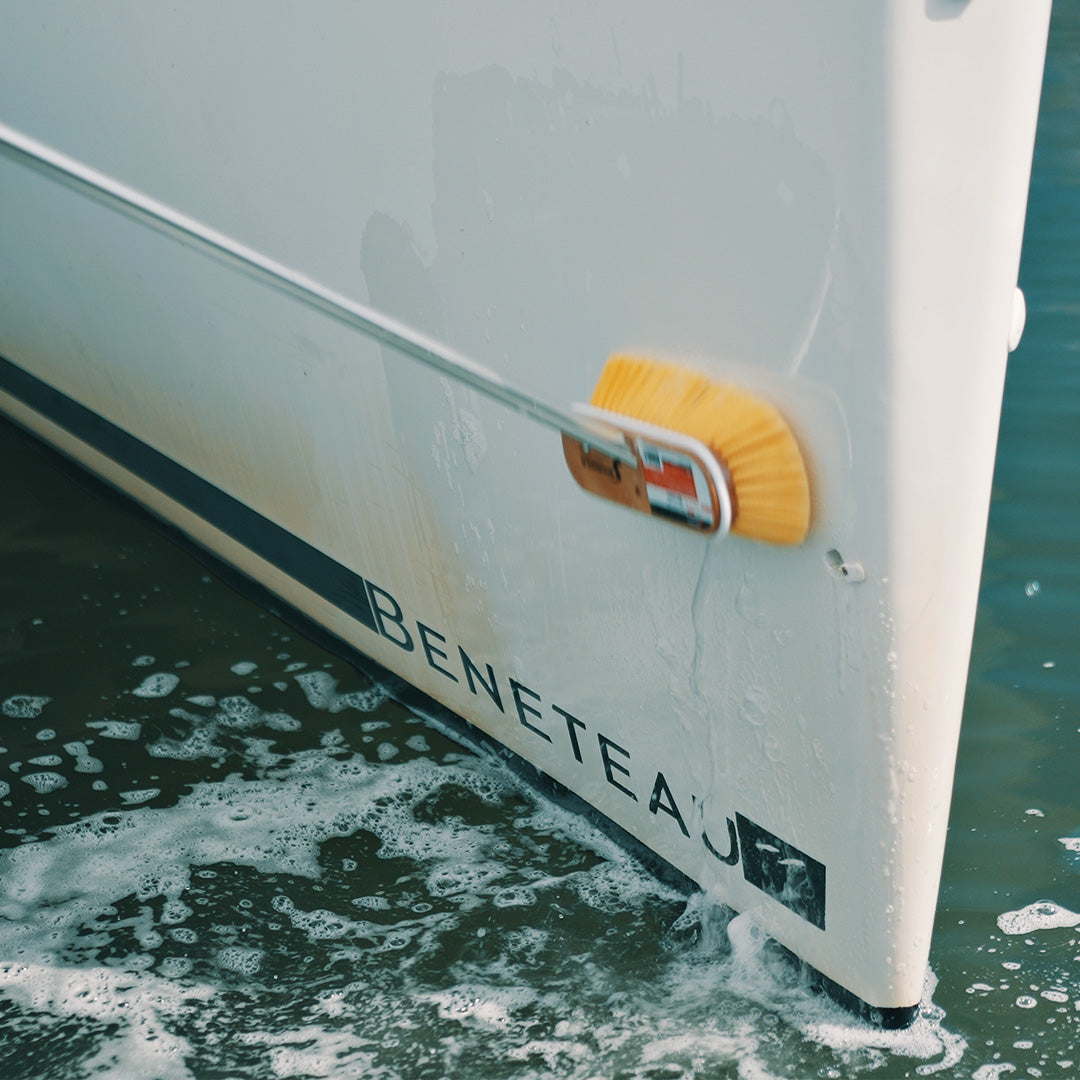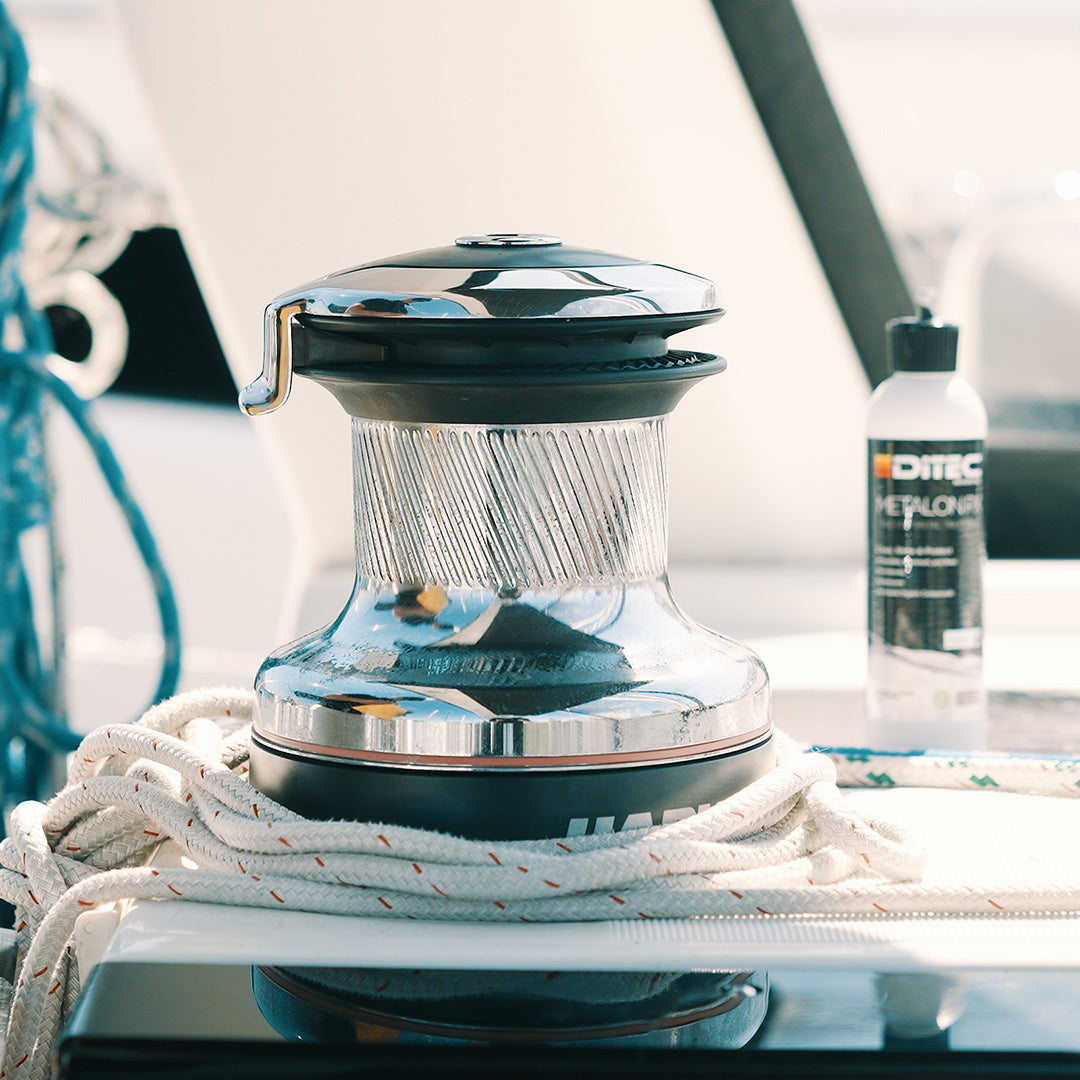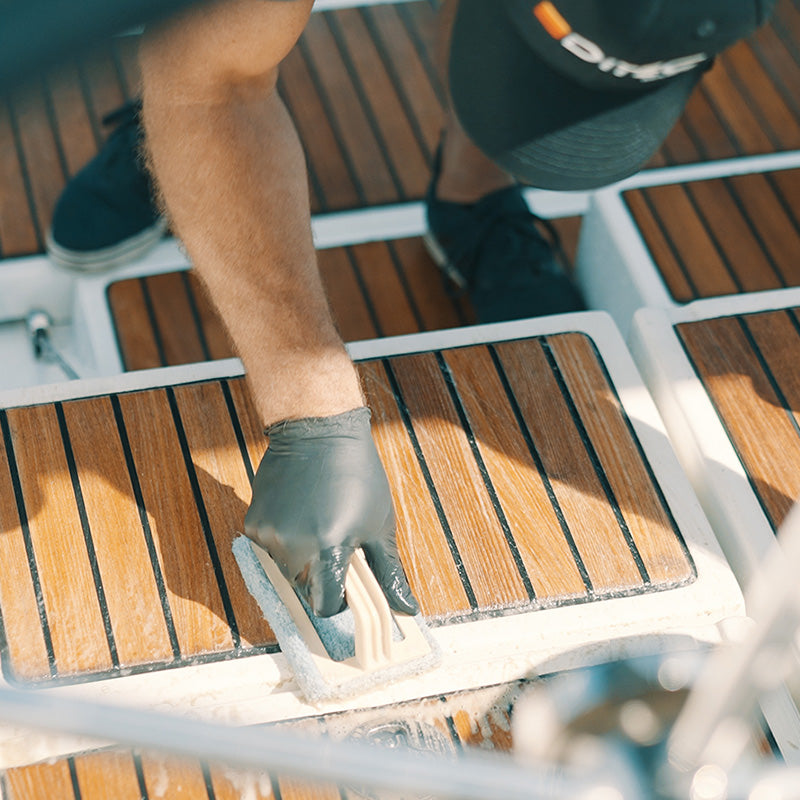Teak wood has long been touted for its strength, beauty, and dynamic functionality. It has been used for centuries to make furniture and boats because of its light weight and exceptional durability. Its myriad useful properties make it one of the most in-demand lumbers in the world, and wood-workers and shipwrights alike continue to use it to craft beautiful, long-lasting boats and furniture.
History of Teak
Teak (tectona grandis) is a tropical hardwood deciduous tree native to south and southeast Asia that can grow up to 130 feet long and 12 feet in diameter. While it originates in India, Myanmar, Thailand, and Laos, its demand has brought plantations to Central America, South America, and Africa.

Photo: The leaves of a young teak tree
Tools made from teak more than 2000 years ago have been found in caves in Western Asia, proving that it has been used since prehistoric times. Its use significantly increased during the seventh century when artisans noticed its resistance to termites and began to use teak to build homes and furniture. In Thailand it was used in doorways and for decorative carvings for religious temples.
During the 1800s, the Dutch began to use teak as well, noting its resistance to dry-rot. Due to a shortage of oak wood during the Victorian era, and because they had colonized Indonesia, they began to export it in large numbers. Teak began being used for Victorian outdoor furniture and decoration as well as on large ships, cabinetry, beams, countertops, and art.
What Makes Teak So Great?
Teak wood has a super tight grain and is naturally high in oils. The oils cause the wood to be waterproof as well as resistant to splitting under the hot sun and protect it from insects and dry rot. This tight grain and high oil concentration also lend themselves to teak’s longevity: ancient beams of teak can still be found in Asia to this day.

Photo: The teak deck of a boat
How to Take Care of Teak
Because teak is so high in its own natural oils and is so durable, it doesn’t require a ton of maintenance; however, it does require the correct maintenance. Neglecting to care for your teak can cause it to weather slightly and become less beautiful over time.
Cleaning your teak regularly with DiTEC’s Teak Clean can help you keep your teak beautiful. Non-toxic, non-corrosive, readily biodegradable, and organic, Teak Clean is specifically engineered for teak and will help restore your teak to its natural color. Because it’s eco-friendly it can also be safely discharged into rivers, streams, oceans and other waterways when used as directed.
Protecting your teak can also promote its longevity as well as maintain its beauty. DiTEC's Triton 2.0 protects your wood surfaces without changing the color of the teak like oils do. Triton protects your teak from spills as well as UV rays and stains, and it’s repellent to water, oil and dirt without making your teak more slippery and sticky (read more about why you should never use teak oil).
You can protect your teak from mold with a disinfectant like DiTEC’s Bioclear, which continues to work even after it has been applied and effectively kills Human Coronavirus, SARS COV-2, COVID-19, and many other germs and bacteria.
Teak is an incredibly strong, sleek, and useful wood that will continue to be utilized for centuries to come. Proven by its prevalence in historical woodworking and continued use today, teak is an exceptional lumber for its many functional properties. Although maintaining your teak shouldn’t be a rigorous job, taking care of it with a few easy steps (like with DiTEC’s teak cleaning system) will help your teak last as long as possible while continuing to be a beautiful part of your life out on the water!


